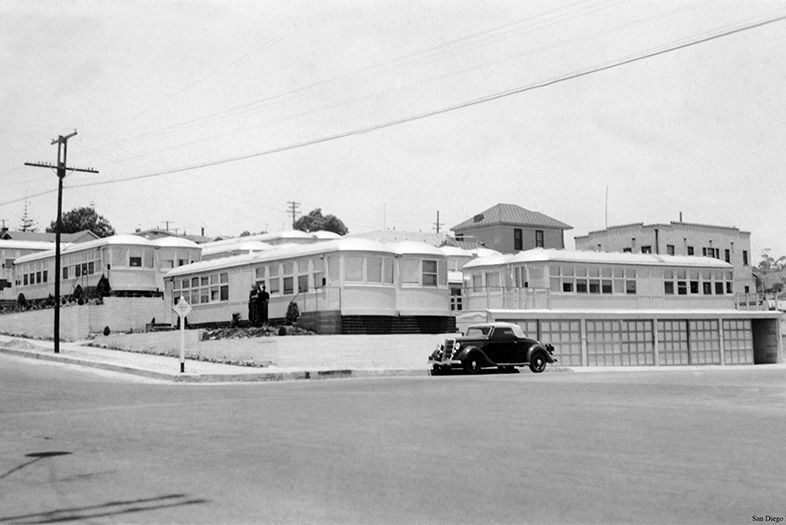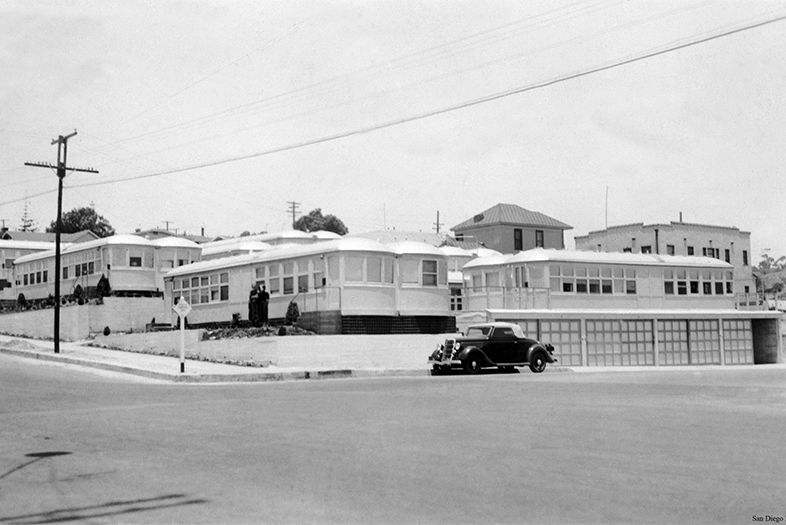By the Numbers
1930 – From O.B. to La Jolla, buses begin phasing out streetcars
1942 – In just one year, San Diego’s population rises 50 percent, to 300,000, a number that hadn’t been expected until 1960
600% – Increase in public transit ridership during World War II
1940 – Women are hired to drive transit vehicles, but only until the war ends
1949 – San Diego’s last railway car retires into the Adams Avenue car barn (now Trolley Barn Park)
1981 – Rail transit starts again in San Diego with the MTS trolley
Originally created in 1910 for the Panama–California Exposition, these historic Class 1 streetcars were retired in 1939. Twenty-four were sold that year, at $50 each. Those that weren’t sold and converted to homes were hauled out to Mission Beach and burned.
Located on the corner of India and Laurel streets, the cars shown above provided quick, if unconventional, housing for San Diego’s rapidly growing population during the defense industry boom of World War II. Monthly rent for a streetcar in the mid-1940s was $30.
The Class 1 design was an improvement upon San Diego’s original streetcars, which were open-air and caused passengers to lose their hats and breathe in exhaust. The new streetcar stretched 43 feet 7 inches long and consisted of a completely wooden body with arched “turtle-back” roof for ample passenger headroom.
Three of these Class 1s survive today. All three were purchased in 1939 by a couple who went on to inhabit them for 50 years. In 1997, the cars were officially designated as a San Diego Historic Landmark.

Vintage San Diego: Mobile Homes
Photo courtesy of San Diego History Center














